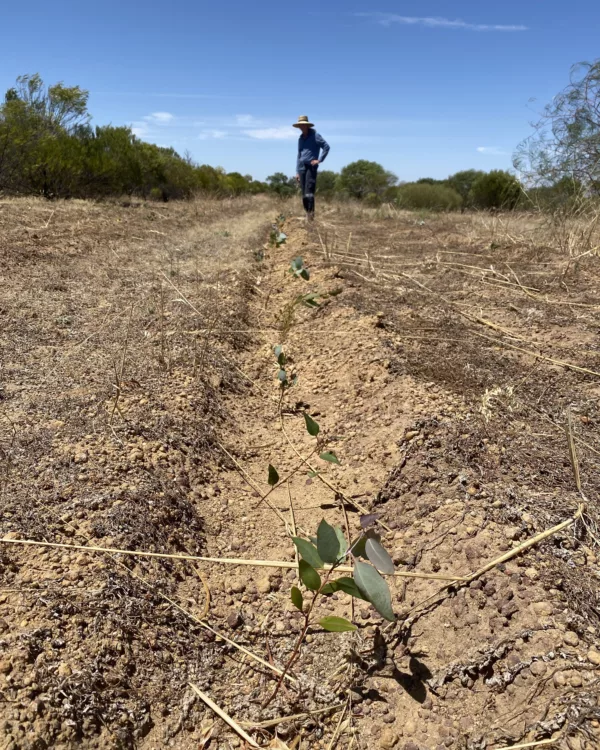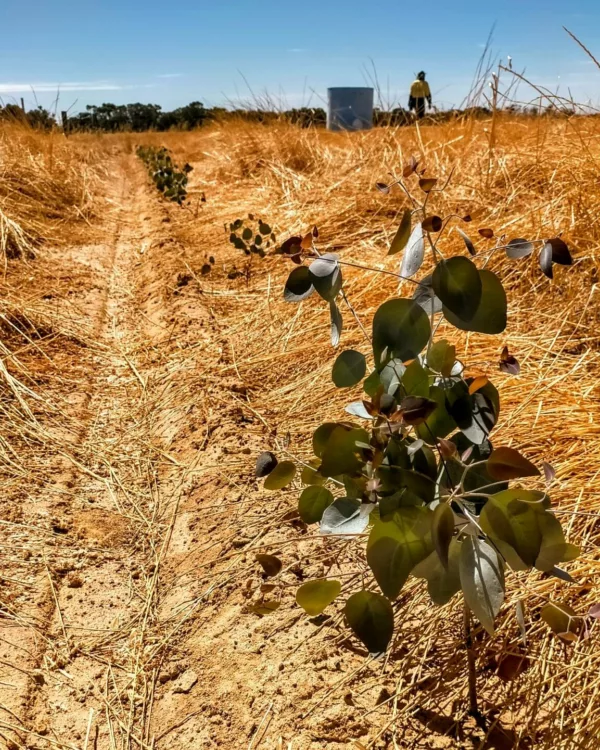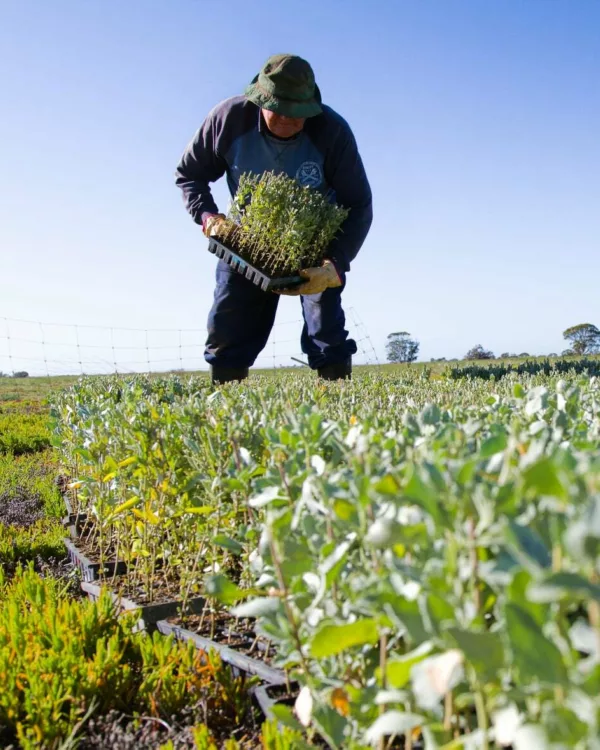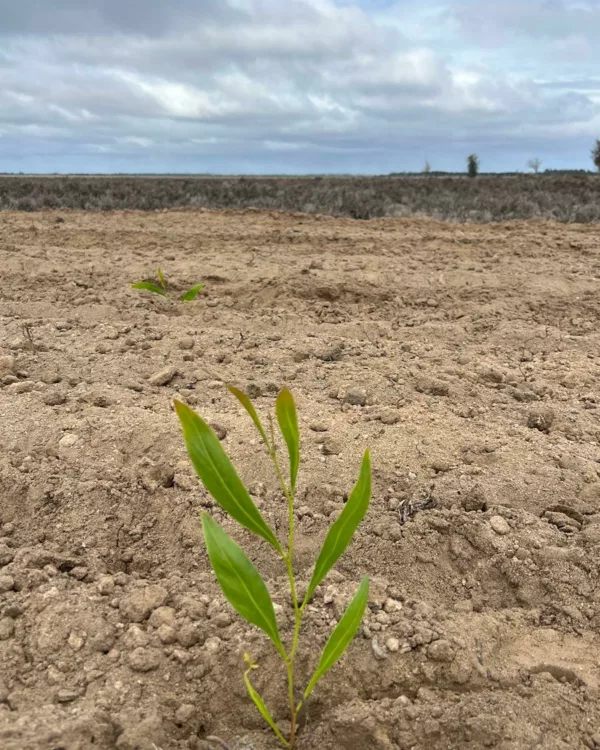Cleared for agriculture over the last 100 years, the Wheatbelt now lays claims to being Australia's most degraded region with less than six per cent native vegetation remaining. #
In collaboration with landholders, we have worked in the Wheatbelt restoring landscapes since our beginnings in 1979. Our current restoration projects focus on threatened Wheatbelt woodlands to restore habitat, reduce salinity, and reintroduce biodiversity.
Eucalyptus salmonophloia (Salmon Gum or Wurak) mainly found in the Wheatbelt are a threatened ecosystem that was once widespread across the regions. Salmon Gums are ancient sentinels in a largely cleared landscape. Sometimes living for more than 500 years, now is our last chance to restore these unique woodlands for the future.

Wurak Woodland Restoration Project, Nembudding, Wheatbelt
Especially significant, this site contains a precious piece of this rare and valuable remnant native bushland. This restoration buffers a small area of mature Eucalyptus salmonophloia (Wurak / Salmon Gum) and Eucalyptus loxophleba (Yandee / York Gum) trees.
Key species
Wurak (Salmon gum) Eucalyptus salmonophloia, primary nesting tree for Carnaby’s black cockatoos in the Wheatbelt, as well as being an important food source for the Western Rosella.
Mangart (Jam Wattle) Acacia acuminata, viable and substantial source of food and nectar for many species of animals and insects.
Tanjinn (Needle tree) Hakea preissii, source of nectar for many birds and insects, also a refuge plant for many small bird species.

Yandee Woodland Restoration Project, Lake Magic, Hyden
Located in an area where over 80 per cent of the local bushland has been cleared for agriculture, our ecological restoration site is situated on the high ground around an ancient salt lake. Restoration will provide a return of food and habitat for the many endemic animal species within this important area.
Key species
Yandee (York Gum) Eucalyptus loxophleba, viable habitat, food source, and nesting tree for many bird species including black cockatoos.
Mangart (Jam Wattle) Acacia acuminata, viable and substantial source of food and nectar for many species of animals and insects.
(Lake Grace Mallee) Eucalyptus loxophleba subsp. Gratiae, viable habitat, food source, and nesting tree for many bird species.
(Saltwater Paperbark) Melaleuca cuticularis, essential food source and habitat for many birds and insects, also a refuge plant for many small animal species.
*Image courtesy of Activate Tree Planting.

Wandoo Woodland Restoration Project, Westdale
Wandoo Woodlands are a unique and important local plant community that have suffered significantly from extensive logging. Cleared of almost all native bushland, this project is building on the last remnant Wandoo Woodland in the area. We are restoring a range of trees and shrubs that flower at different times of the year to ensure a continuous source of nectar for birds and insects, which are a vital food source for insectivorous birds such as the Western Yellow Robin, the Golden Whistler and Rufous Treecreeper.
2024 plantings at Westdale were generously supported by grant funding from the Synergy Community Giving Fund.
Key species
Wandoo Eucalyptus wandoo, habitat and nesting tree for a variety of birds and animals, food source for possums and nectar eating birds and insects.
Pudjak (Parrot bush) Banksia sessilis, refuge and habitat plant for small animal species, vital food source for black cockatoos and ring neck parrots.
(Prickly conostylis) Conostylis aculeata, food source for a variety of insects, and in turn many insectivorous bird species.
*Image courtesy of Activate Tree Planting.

Wagin Restoration Project, Wagin
Situated in close proximity to a large system of salt lakes, this property has become highly salt-affected with remnant stands of Eucalyptus loxophleba (York Gum), Allocasuarina fraseriana (Sheoak) and Hakea sp. steadily being lost to samphire and weeds.
Re-creating mosaics of Eucalyptus sp., Melaleuca sp., Allocasuarina sp. and samphire, this restoration project addresses habitat fragmentation, biodiversity loss and salinisation in the Salt Lake ecosystems and adjoining woodlands that form part of the Blackwood River Catchment.
Key species
Coojong (Golden wreath wattle) Acacia saligna fast growing pioneer plant with clusters of bee-attracting yellow flowers, ideal for windbreaks.
Mangart (Raspberry jam wattle) Acacia acuminata slow growing nitrogen fixing plant well suited to shallow and eroding soils.
